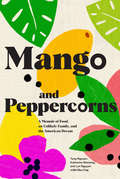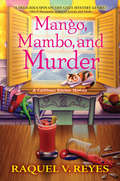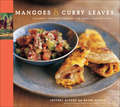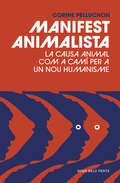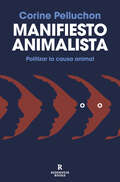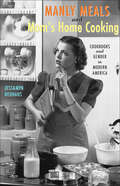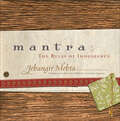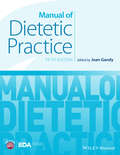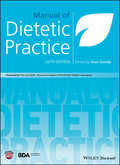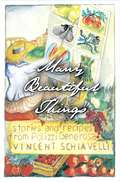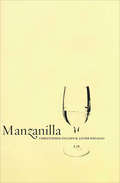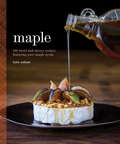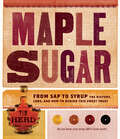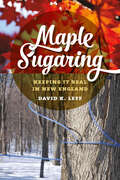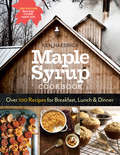- Table View
- List View
Mango Madness Murder (Frosted Love Cozy Mysteries #15)
by Summer PrescottSometimes, even the best of decisions hurt Sometimes, they can be murder. Cupcake baker and amateur sleuth, Melissa Gladstone-Beckett, is faced with some tough decisions. Her whole life is about to change, no matter what she decides, and in the midst of it all, she finds herself wrapped up in trying to solve yet another murder case, with her dashing detective hubby, Chas. Because trouble never seems to strike just once, Missy's friends have lives that are in turmoil as well, and the poor woman spreads herself far too thin trying to help others, as well as herself. Will the fact that she's distracted by what's going on in her life, put her in terrible danger? Will she be able to cope with the possibility that someone she loves could be utterly destroyed? Find out in this fast-paced, action-packed tale that will have you on the edge of your seat! This delightful Cozy Mystery can be enjoyed as a standalone, but if you'd like more of Missy and Chas, be sure to check out the rest of this series, and the continuation series: The INNcredibly Sweet series, and Cupcakes in Paradise.
Mango and Peppercorns: A Memoir of Food, an Unlikely Family, and the American Dream
by Tung Nguyen Katherine Manning Lyn NguyenA powerful memoir of resilience, friendship, family, and food from the acclaimed chefs behind the award-winning Hy Vong Vietnamese restaurant in Miami.Through powerful narrative, archival imagery, and 20 Vietnamese recipes that mirror their story, Mango & Peppercorns is a unique contribution to culinary literature.In 1975, after narrowly escaping the fall of Saigon, pregnant refugee and gifted cook Tung Nguyen ended up in the Miami home of Kathy Manning, a graduate student and waitress who was taking in displaced Vietnamese refugees. This serendipitous meeting evolved into a decades-long partnership, one that eventually turned strangers into family and a tiny, no-frills eatery into one of the most lauded restaurants in the country.Tung's fierce practicality often clashed with Kathy's free-spirited nature, but over time, they found a harmony in their contrasts—a harmony embodied in the restaurant's signature mango and peppercorns sauce.• IMPORTANT, UNIVERSAL STORY: An inspiring memoir peppered with recipes, it is a riveting read that will appeal to fans of Roy Choi, Ed Lee, Ruth Reichl, and Kwame Onwuachi.• TIMELY TOPIC: This real-life American dream is a welcome reminder of our country's longstanding tradition of welcoming refugees and immigrants. This book adds a touchpoint to that larger conversation, resonating beyond the bookshelf.• INVENTIVE COOKBOOK: This book is taking genre-bending a step further, focusing on the story first and foremost with 20 complementary recipes. Perfect for:• Fans of culinary nonfiction• Fans of Ruth Reichl, Roy Choi, Kwame Onwuachi, and Anya Von Bremzen• Home cooks who are interested in Asian food and cooking
Mango, Mambo, and Murder (A Caribbean Kitchen Mystery)
by Raquel V. ReyesCuban-American cooking show star Miriam Quiñones-Smith becomes a seasoned sleuth in Raquel V. Reyes's Caribbean Kitchen Mystery debut, a savory treat for fans of Joanne Fluke and Jenn McKinlay.Food anthropologist Miriam Quiñones-Smith's move from New York to Coral Shores, Miami, puts her academic career on hold to stay at home with her young son. Adding to her funk is an opinionated mother-in-law and a husband rekindling a friendship with his ex. Gracias to her best friend, Alma, she gets a short-term job as a Caribbean cooking expert on a Spanish-language morning TV show. But when the newly minted star attends a Women's Club luncheon, a socialite sitting at her table suddenly falls face-first into the chicken salad, never to nibble again.When a second woman dies soon after, suspicions coalesce around a controversial Cuban herbalist, Dr. Fuentes--especially after the morning show's host collapses while interviewing him. Detective Pullman is not happy to find Miriam at every turn. After he catches her breaking into the doctor's apothecary, he enlists her help as eyes and ears to the places he can't access, namely the Spanish-speaking community and the tawny Coral Shores social scene.As the ingredients to the deadly scheme begin blending together, Miriam is on the verge of learning how and why the women died. But her snooping may turn out to be a recipe for her own murder.
Mangoes & Curry Leaves: Culinary Travels Through the Great Subcontinent
by Naomi Duguid Jeffrey AlfordFor this companion volume to the award-winning Hot Sour Salty Sweet, Jeffrey Alford and Naomi Duguid travel west from Southeast Asia to that vast landmass the colonial British called the Indian Subcontinent. It includes not just India, but extends north to Pakistan, Bangladesh, and Nepal and as far south as Sri Lanka, the island nation so devastated by the recent tsunami. For people who love food and cooking, this vast region is a source of infinite variety and eye-opening flavors. Home cooks discover the Tibetan-influenced food of Nepal, the Southeast Asian tastes of Sri Lanka, the central Asian grilled meats and clay-oven breads of the northwest frontier, the vegetarian cooking of the Hindus of southern India and of the Jain people of Gujarat. It was just twenty years ago that cooks began to understand the relationships between the multifaceted cuisines of the Mediterranean; now we can begin to do the same with the foods of the Subcontinent.
Manifest animalista: La causa animal com a camí per a un nou humanisme
by Corine PelluchonLa violència contra els animals és un atac directe a la nostra humanitat. Això demostra Corine Pelluchon en aquest breu, pragmàtic, i controvertit assaig que suposa una contribució radical a l'ètica i la filosofia política. Lluitar contra el maltractament animal és rebel·lar-se contra una societat basada en l'explotació, i per això la causa animalista és una qüestió política major que ens concerneix a tots, més enllà d'ideologies o conflictes d'interessos. Amb un estil viu, persuasiu i inspirador, l'autora proposa un camí possible i factible per portar aquest debat a l'esfera política amb tanta claredat i urgència com sigui possible. Ressenyes:«Corine Pelluchon ho explica tot absolutament bé en tot just un centenar de pàgines: per ser una alternativa vàlida, és imprescindible polititzar la causa animal.»Luce Lapin, Charlie Hebdo «L'objectiu principal de l'autora està completament assolit en aquest Manifest animalista: dóna al lector les claus que li permetran ampliar el radi d'acció de l'humanisme als animals.»Philippe Douroux, Libération «Una perspectiva bella i ambiciosa.»Isabelle Gravillon, Femme Majuscule «Un llibre d'intervenció política, tan compromès com lúcid.»Robert Jules, La Tribune «Una de les moltes i grans qualitats d'aquest Manifest animalista és que, en tot moment, el seu projecte està exposat de manera perfectament creïble i realitzable. Precisament per això, l'autora no es fa cap il·lusió sobre la dificultat que suposa introduir la qüestió animal en el debat polític.»Hicham-Stéphane Afeissa, Non Fiction
Manifiesto animalista
by Corine PelluchonLa violencia contra los animales es un ataque directo a nuestra humanidad. Eso demuestra Corine Pelluchon en este breve ensayo, pragmático, controvertido y que supone una contribución radical a la ética y la filosofía política. <P><P>Luchar contra el maltrato animal es rebelarse contra una sociedad basada en la explotación, y por ello la causa animalista es una cuestión política mayor que nos concierne a todos, más allá de ideologías o conflictos de intereses. <P>Con un estilo vivo, persuasivo e inspirador, la autora propone un camino posible y factible para llevar el debate a la esfera política con tanta claridad y urgencia como sea posible.
Manifold Destiny
by Chris Maynard Bill SchellerGiving new meaning to the term "fast food" Rest-stop grade F meat patty? Nah. Nuggets of reconstituted poultry bits? Pass. Deep-fried fish discus? No, really, thanks all the same. It's time to bid farewell to the roadside meal as you know it. Nearly twenty years ago, Chris Maynard and Bill Scheller opened the world's eyes to the beautym of car-engine gastronomy in the original Manifold Destiny. And now that another generation of both drivers and eaters has emerged, the cult classic is due for an overhaul. In this shiny, spanking-new edition, learn how to make s'mores in your Scion, poach fish in your Pontiac, even bust out a gourmet snack from under the hood of your Escalade. With step-by-step diagrams, crowd-pleasing recipes, and thorough instructions, now you can turn your car into a kitchen without ever crossing any golden arches. Hilarious, bizarre, and ultimately (seriously!) useful, Manifold Destiny is and always will be an unparalleled original. So, slap a ham steak under the hood of your car, hit the gas, and drive until you reach delicious -- which is in approximately fifty miles, depending on traffic.
Manly Meals and Mom's Home Cooking: Cookbooks and Gender in Modern America
by Jessamyn NeuhausFrom the first edition of The Fannie Farmer Cookbook to the latest works by today's celebrity chefs, cookbooks reflect more than just passing culinary fads. As historical artifacts, they offer a unique perspective on the cultures that produced them. In Manly Meals and Mom's Home Cooking, Jessamyn Neuhaus offers a perceptive and piquant analysis of the tone and content of American cookbooks published between the 1790s and the 1960s, adroitly uncovering the cultural assumptions and anxieties—particularly about women and domesticity—they contain.Neuhaus's in-depth survey of these cookbooks questions the supposedly straightforward lessons about food preparation they imparted. While she finds that cookbooks aimed to make readers—mainly white, middle-class women—into effective, modern-age homemakers who saw joy, not drudgery, in their domestic tasks, she notes that the phenomenal popularity of Peg Bracken's 1960 cookbook, The I Hate to Cook Book, attests to the limitations of this kind of indoctrination. At the same time, she explores the proliferation of bachelor cookbooks aimed at "the man in the kitchen" and the biases they display about male and female abilities, tastes, and responsibilities.Neuhaus also addresses the impact of World War II rationing on homefront cuisine; the introduction of new culinary technologies, gourmet sensibilities, and ethnic foods into American kitchens; and developments in the cookbook industry since the 1960s. More than a history of the cookbook, Manly Meals and Mom's Home Cooking provides an absorbing and enlightening account of gender and food in modern America.
Manly Meals and Mom's Home Cooking: Cookbooks and Gender in Modern America
by Jessamyn NeuhausA study of what American cookbooks from the 1790s to the 1960s can show us about gender roles, food, and culture of their time.From the first edition of The Fannie Farmer Cookbook to the latest works by today’s celebrity chefs, cookbooks reflect more than just passing culinary fads. As historical artifacts, they offer a unique perspective on the cultures that produced them. In Manly Meals and Mom’s Home Cooking, Jessamyn Neuhaus offers a perceptive and piquant analysis of the tone and content of American cookbooks published between the 1790s and the 1960s, adroitly uncovering the cultural assumptions and anxieties—particularly about women and domesticity—they contain.Neuhaus’s in-depth survey of these cookbooks questions the supposedly straightforward lessons about food preparation they imparted. While she finds that cookbooks aimed to make readers—mainly white, middle-class women—into effective, modern-age homemakers who saw joy, not drudgery, in their domestic tasks, she notes that the phenomenal popularity of Peg Bracken’s 1960 cookbook, The I Hate to Cook Book, attests to the limitations of this kind of indoctrination. At the same time, she explores the proliferation of bachelor cookbooks aimed at “the man in the kitchen” and the biases they display about male and female abilities, tastes, and responsibilities.Neuhaus also addresses the impact of World War II rationing on homefront cuisine; the introduction of new culinary technologies, gourmet sensibilities, and ethnic foods into American kitchens; and developments in the cookbook industry since the 1960s. More than a history of the cookbook, Manly Meals and Mom’s Home Cooking provides an absorbing and enlightening account of gender and food in modern America.“An engaging analysis . . . Neuhaus provides a rich and well-researched cultural history of American gender roles through her clever use of cookbooks.” —Sarah Eppler Janda, History: Reviews of New Books“With sound scholarship and a focus on prescriptive food literature, Manly Meals makes an original and useful contribution to our understanding of how gender roles are institutionalized and perpetuated.” —Warren Belasco, senior editor of The Oxford Encyclopedia of American Food and Drink“An excellent addition to the history of women’s roles in America, as well as to the history of cookbooks.” —Choice
Manresa: An Edible Reflection [A Cookbook]
by David Kinch Christine Muhlke Eric RipertThe long-awaited cookbook by one of the San Francisco Bay Area's star chefs, David Kinch, who has revolutionized restaurant culture with his take on the farm-to-table ethic and focus on the terroir of the Northern California coast. Since opening Manresa in Los Gatos in 2002, award-winning Chef David Kinch has done more to create a sense of place through his food--specifically that of Northern California, where the Santa Cruz Mountains meet the sea--than any other chef at his level. Rather than buy his ingredients from a network of local producers, he closed the loop between farm and table by partnering with nearby Love Apple Farms, which grows almost 100 percent of his produce year round. Kinch's interpretation of these ingredients, drawing on his 30 years in restaurants as well as his far-flung and well-fed travels, are at the heart of the Manresa experience. In Manresa, Chef Kinch details his thoughts on building a dish: the creativity, experimentation and emotion that go into developing each plate and daily menu--and how a tasting menu ultimately tells a deeper story. A literary snapshot of the restaurant, from Chef Kinch's inspirations to his techniques, this book celebrates the creativity behind the food of Manresa and its profound connection to the land and sea of Northern California.
Mantra: The Rules of Indulgence
by Jehangir MehtaEnter a world of adventure and indulgence in this exotic cookbook by the chef Bon Appétit has called "an anarchic artist of the last course."Renowned chef Jehangir Mehta has relentlessly immersed himself in creating inventive desserts and other dishes at his new Manhattan food and wine bar, Graffiti, and as the creator of the sumptuous confections for his online store and event-management company, Partistry. He draws endless inspiration from his Indian heritage and from ayurveda, the ancient science of health and medicine. Now, in this gorgeous book?, Mehta shares his holistic approach to refreshing the body, mind, and spirit through delicious recipes using only the purest and most beneficial ingredients. Wake up to the enticing aroma of fresh-baked Jasmine-Glazed Doughnuts or delectable Hazelnut Crêpes with Caramel-Pine Nut Sauce.Delight in one of Mehta's celebrated flavor fusions: Salty Caramel Tapioca Tarts, Green Papaya and Persimmon Salad with Pepper-Coconut Sorbet, and Lime-Brushed Melon Mille-feuille with Beet Sorbet.Enjoy Mehta's Persian Caraway Seed Cookies and Falooda with Fresh Strawberry Ice Cream, and experience the best of Mexico and India with a superlative Tres Leches Cake with Coconut-Curry Emulsion, Pears, and Almond.Whether you are preparing a spectacular feast for a dinner party or a simple dessert on a whim, you'll be inspired by the amazing range of ingredients in the book—from the most common to the rather unusual. This captivating book is perfect for anyone interested in the intersection of the culinary arts and the restorative properties of nature.
Manual of Dietetic Practice
by Briony Thomas Jacki BishopThe standard work for all those involved in the field of clinical nutrition and dietetics, The Manual of Dietetic Practice has been equipping health care professionals with the essential foundations on which to build expertise and specialist skill since it was first published in 1988. The fourth edition responds to the changing demand for multidisciplinary, patient-centred, evidence-based practice and has been expanded to include dedicated chapters covering adult nutrition, freelance dietetics, complementary and alternative therapies. Compiled from the knowledge of both individual experts and the British Dietetic Association's Specialist Groups, this truly is the essential guide to the principles of dietetics across its whole range.
Manual of Dietetic Practice
by Joan GandySince publication of its first edition, Manual of Dietetic Practice has remained an essential guide to the key principles of dietetics and a core text for healthcare professionals looking to develop their expertise and specialist skills. Published on behalf of the British Dietetic Association, the UK professional body for dietitians, it covers the entire dietetics curriculum and is also an ideal reference text for qualified practitioners.The book has been extensively restructured for its fifth edition and is now divided into two parts to make it easier to locate key topics. The first part covers professional practice, nutrition in specific groups, nutritional status and non-clinical areas of dietetic practices, while the second focuses on clinical dietetic practice, including nutrition support, and dietetic practice in individual areas of disease, from respiratory and renal disorders to mental health and palliative care. This edition also offers a companion website, www.manualofdieteticpractice.com, which includes case studies, discussion vignettes to place topics in a clinical context, downloadable copies of the appendices, key tables and figures, and references and useful links.
Manual of Dietetic Practice
by Joan GandyNow in its sixth edition, the bestselling Manual of Dietetic Practice has been thoroughly revised and updated to include the most recent developments and research on the topic. Published on behalf of the British Dietetic Association, this comprehensive resource covers the entire dietetics curriculum, and is an ideal reference text for healthcare professionals to develop their expertise and specialist skills in the realm of dietetic practice. <p><p> Written for dietitians, clinical nutritionists, and other healthcare professionals by leading dietitians and other professionals, the Manual of Dietetic Practice continues to provide a crucial resource for experts and novices alike.
Manual of Lifestyle Medicine (Lifestyle Medicine)
by James M. RippeThe fundamental premise of lifestyle medicine is that daily habits profoundly impact health and quality of life both in the short-term and long-term. Written by lifestyle medicine pioneer and cardiologist , Dr. James Rippe, this book provides a clinically oriented, evidence-based look into key lifestyle factors and how to prescribe them to individuals of all ages. Written for professionals working at all levels of medical and healthcare practice, this manual summarizes the major components of lifestyle medicine, from physical activity and nutrition to weight management and the avoidance of tobacco products. It includes clinical guidelines and practices for using lifestyle medicine principles to lower the risk of numerous chronic conditions. The manual also provides information on behavior change, approaches to lowering the risk of dementia, treatment of addictions and injury prevention. Features: Explains how lifestyle medicine can reduce the risk of heart disease, diabetes, cancer, osteoarthritis, dementia and many other chronic conditions. Chapters begin with bulleted key points and conclude with a list of clinical applications. Provides strategies for prescribing physical activity and helping patients improve their nutrition, lose weight if necessary and reduce stress. Includes clinically relevant sections on “Treating Addiction, Preventing Injury and Improving Brain Health”. This book provides updated and clinically targeted summaries used in conjunction with Dr. Rippe's major academic textbook Lifestyle Medicine, now in its third edition, published by CRC Press/Taylor & Francis Group, LLC.
Manuale per Principianti alla Dieta Ketogenica
by Hiddenstuff Entertainment-Vuoi perdere peso e diminuire il grasso corporeo? -Stai provando a sembrare più in salute ed avere più energie? Ti piacerebbe poter eliminare malattie, malesseri, infiammazioni, dolori & depressione? Per moltissimo tempo, le diete ketogeniche sono state usate per trattare un gran numero di malanni e per facilitare la perdita di peso! Usare le tecniche di dieta keto ti aiuterà anche con malattie ed infiammazioni croniche, migliorerà il tuo sistema immunitario, i tuoi livelli di energia, la concentraziobne, la felicità generale e molto altro! Scopri i segreti della cura naturale che i professionisti usano per sentirsi più in forma che mai! Con decenni di strategie testate, questo ebook ti mostrerà il modo migliore e più rapido per usare le cure naturali sul tuo corpo per stare meglio! Imparerai ad aumentare il tuo benessere in solo poche settimane. Ed inoltre, migliorerai letteralmente ogni singolo aspetto della tua vita. Vuoi sapere come le persone combattono contro malattie e dolori cronici? Anche tu puoi imparare i loro segreti per permetterti di essere più felice ed in salute. Questo manuale ti insegna tecniche comprovate senza l'utilizzo di supplementi o corsi costosi. Cosa è incluso: - Dieta ketogenica. - Perdere peso. - Sconfiggere la depressione. - Essere più felice. - Sconfiggere malattie croniche. - Avere più energia. - Dormire meglio. - Superare malanni. - Nutrizione. - Cosa dovresti sapere. + MOLTO ALTRO! Se vuoi essere più sano, curare malanni, o migliorare la tua concentrazione ed il tuo benessere, allora questo manuale è per te. --> Vai in cima alla pagina e clicca su aggiungi al carrello per acquistarlo immediatamente Disclaimer: This author and or rights owner(s) make no claims, promises, or guarantees in regards to the accuracy, completeness, or adequacy of the contents of this book, and expressly disclaims liability for err
Manuale per il Succo di Sedano
by Hiddenstuff EntertainmentCura te stesso e sii più sano che mai con il succo di sedano! Vorresti essere in grado di eliminare malattie, malesseri, infiammazioni, dolori e depressione? Per moltissimo tempo, il succo di sedano è stato utilizzato per curare un gran numero di malanni! Usare tecniche di guarigione naturale ti aiuterà anche con malattie ed infiammazioni croniche, potenzierà il tuo sistema immunitario, i tuoi livelli di energia e di concentrazione, la felicità generale e molto altro! Qui vengono introdotti i segreti che i professionisti del settore usano per sentirsi più sani che mai! Con decenni di strategie testate, questo ebook ti mostrerà il metodo più rapido ed efficace per usare la guarigione naturale con il succo di sedano per far sì che il tuo benessere ne tragga giovamento! Imparerai come aumentare il tuo benessere in solo poche settimane. Non solo, migliorerai letteralmente ogni singolo aspetto della tua vita. Vuoi sapere come le persone combattono contro malattie e malanni cronici? Puoi imparare anche tu i loro segreti permettendoti di essere più felice e sano. Questo manuale ti insegna tecniche comprovate senza l'utilizzo di corsi o supplementi costosi. Cos'è compreso: - Rimedi con il succo di sedano - Sconfiggere malattie croniche - Avere più energie - Dormire meglio - Superare i malanni - Nutrizione - Cosa dovresti sapere + MOLTO ALTRO! Se vuoi essere più sano, curare i malanni, o migliorare la tua concentrazione ed il tuo benessere, allora questo manuale fa per te. --> Vai in cima alla pagina e clicca su aggiungi al carrello per comprarlo immediatamente Disclaimer: This author and or rights owner(s) make no claims, promises, or guarantees in regards to the accuracy, completeness, or adequacy of the contents of this book, and expressly disclaims liability for errors and omissions in the contents within. This product is for reference use only. Plea
Many Beautiful Things
by Vincent SchiavelliVincent Schiavelli is known to most of us as a character actor who has appeared in such films as Ghost, Man on the Moon, and One Flew Over the Cuckoo's Nest. Schiavelli grew up in Brooklyn, speaking both Sicilian and English at home. Some of his earliest memories are of sitting at the kitchen table while his grandparents told stories of the life and the people they had left behind in Polizzi Generosa, a small city in the Madonie Mountains of Sicily. As Schiavelli grew older, those stories, and the city about which they were told, took on a mythic quality. When he was nearly forty he made his first trip there, and what he found was more extraordinary than the "once upon a time" fables of his childhood. In Many Beautiful Things, Schiavelli invites readers to join him in discovering the people, culture, and food of the city that has, in essence, become his second home. Equal parts memoir and cookbook, it is the best of both. Schiavelli is an accomplished and elegant writer who evokes a foreign and often closed culture from a unique perspective: an outsider fluent in the language with still-strong familial ties. The recipes -- which reflect the ancient influences of Greece, North Africa, and Spain -- are simple, rustic, and delicious, depending on local products and seasonal bounty. This is not your usual Southern Italian fare but a unique regional cuisine: Pumpkin Caponata, Ditali with Drowned Lettuce, Fried Ricotta Omelet, Potato Gratin with Bay Leaves, Almond Love Bites, Veal Shoulder Roasted with Marsala, and Baked Pasta with Almonds (rigatoni baked in a pork ragu with chopped toasted almonds) are just a few of the extraordinary dishes you'll find in this book, all of which can be reproduced by cooks with delectable results. Schiavelli provides a comprehensive list of mail-order sources. And if you want to visit Polizzi Generosa, there's a guide on how to get there, where to stay, and where to eat. Illustrated with black-and-white line drawings by Polizzi's best known artist, Santo Lipani (who also happens to be an extraordinary cook), Many Beautiful Things is a feast, both culinary and literary.
Manzanilla
by Christopher Fielden Javier HidalgoAn exploration and appreciation of a fine Spanish sherry too often overlooked in the world of wines and aperitifs—but is about to make its mark. Little-known and underappreciated, Manzanilla is a variety of fino sherry made around the port of Sanlúcar de Barrameda, Andalusia, Spain. Here, the author of Is This the Wine You Ordered, Sir? and A Traveller&’s Wine Guide to France, casts an admiring light on a delightful sherry that is only now gaining the reputation it deserves and finding admirers all around the world. Basing his findings on research in the archives of the Duchess of Medina Sidonia and visits to the bodegas of all the leading producers, Christopher Fielden guides the reader towards a new view of this dry white wine. Tasting notes are also provided.
Man’s Higher Consciousness
by Prof. Hilton HotemaIn this book, first published in 1962, Professor Hilton Hotema provides his insights into how we could all live longer by learning the body's simple requirements of breathing fresh air, avoiding animal flesh, banning any cooked food, and by gradually lessening the amount of food consumed. Hotema firmly believes that breathing fresh air and consuming organic fruits and natural organic liquids alone could extend our lives and also lays bare his secret that what kills at an early age is not the illusion of time, but rather overeating, breathing in toxic, unclean air, and elements such as electronic radiation, dirty electricity and medications.A must-read for any health-conscious individual.
Maple
by Katie WebsterMaple syrup is much more than a perfect topping for pancakes--it's a simple and seasonal way to add welcome sweetness to every meal. From fast and nutritious entrees like Maple Tahini Chicken and Broccoli to more sophisticated fare like Maple Cider Brined Pork, these easy recipes will change your relationship with this familiar flavor. And since maple syrup is paleo and vegan friendly (and naturally gluten free), almost anyone can enjoy such treats as Maple Bourbon Pumpkin Pie and Maple Pear Ginger Sorbet. Serve up the sweet taste of maple whenever you want it, with 100 no-fail recipes, plus tips on storage, substitution, and DIY syrupmaking. Get the most out of your maple!
Maple Nut Murder (Pies and Pages Cozy Mysteries #12)
by Carolyn Q. HunterIf there is one time of year Bert loves more than any other, it's Christmas! However, during the hot summer month of July in Culver's Hood, she has to get her wintry fix at her best friend's year round holiday shop: Christmas in July. Thankfully, this year Carla is hosting a week-long event, featuring sales on decorations, Bert's famous pies, and even a visit from Santa and his elves. Unfortunately, any semblance of holiday cheer is destroyed when a body is discovered. In order to keep the peace with her dear detective, Bert is determined to stay far away from the investigation, a resolution which lasts only until someone very close to her is implicated in the crime. A love triangle, tensions in the police ranks, and even organized crime put a definite damper on this mid-summer holiday. Will Bert be able to solve the case before she's the next victim of someone who is definitely on Santa's naughty list?
Maple Sugar: From Sap to Syrup: The History, Lore, and How-To Behind This Sweet Treat
by Tim HerdExplore the fascinating history of maple sugaring in this informative guide to all things syrup. From the tap on the tree to the pancakes on your plate, Tim Held explains every nuanced step of the sugaring process. Learn to identify different kinds of maple trees and get inspired to tap the sugar maples in your backyard. Held also includes tempting recipes that use syrup in old-fashioned treats like maple nut bread, maple eggnog, and pecan pie.
Maple Sugaring: Keeping It Real in New England (Garnet Books)
by David K. LeffThe art and science of maple syrup, and stories from the people who make it
Maple Syrup Cookbook, 3rd Edition: Over 100 Recipes for Breakfast, Lunch & Dinner
by Ken Haedrich Marion CunninghamMaple Syrup Cookbook has convinced thousands of readers that maple syrup makes everything taste better. Now, the revised third edition of this classic cookbook features full-color photographs and a dozen of the author’s favorite new recipes. In all, the book now offers more than 100 ways to enjoy maple syrup at every meal, including Buttermilk Corn Cakes, Banana Crêpes with Maple Rum Sauce (perfect for brunch), Maple Cream Scones, Lacy Sweet-Potato Patties, Maple Bacon Strata, Curried Pumpkin-Apple Soup, Creamy Maple Fondue, Maple-Glazed Brussels Sprouts, Orange-Maple Wings, Beet and Pear Relish, Maple-Roasted Root Vegetables, Steamed Brown Bread, Maple Onion Marmalade, Hot & Spicy Shrimp Kabobs, Chicken with Maple-Mustard Glaze, and Crispy Maple Spareribs. There are barbecue sauces and salad dressings and dozens of tempting desserts, from Almond Bars and Coffee Chip Cookies to Maple Apple Pie, Maple Pecan Pie, Maple-Ginger Ice Cream, and much more. There’s even a recipe for Maple Bread-and-Butter Pickles. This is a treasure chest of delightful recipes you’ll turn to again and again.

